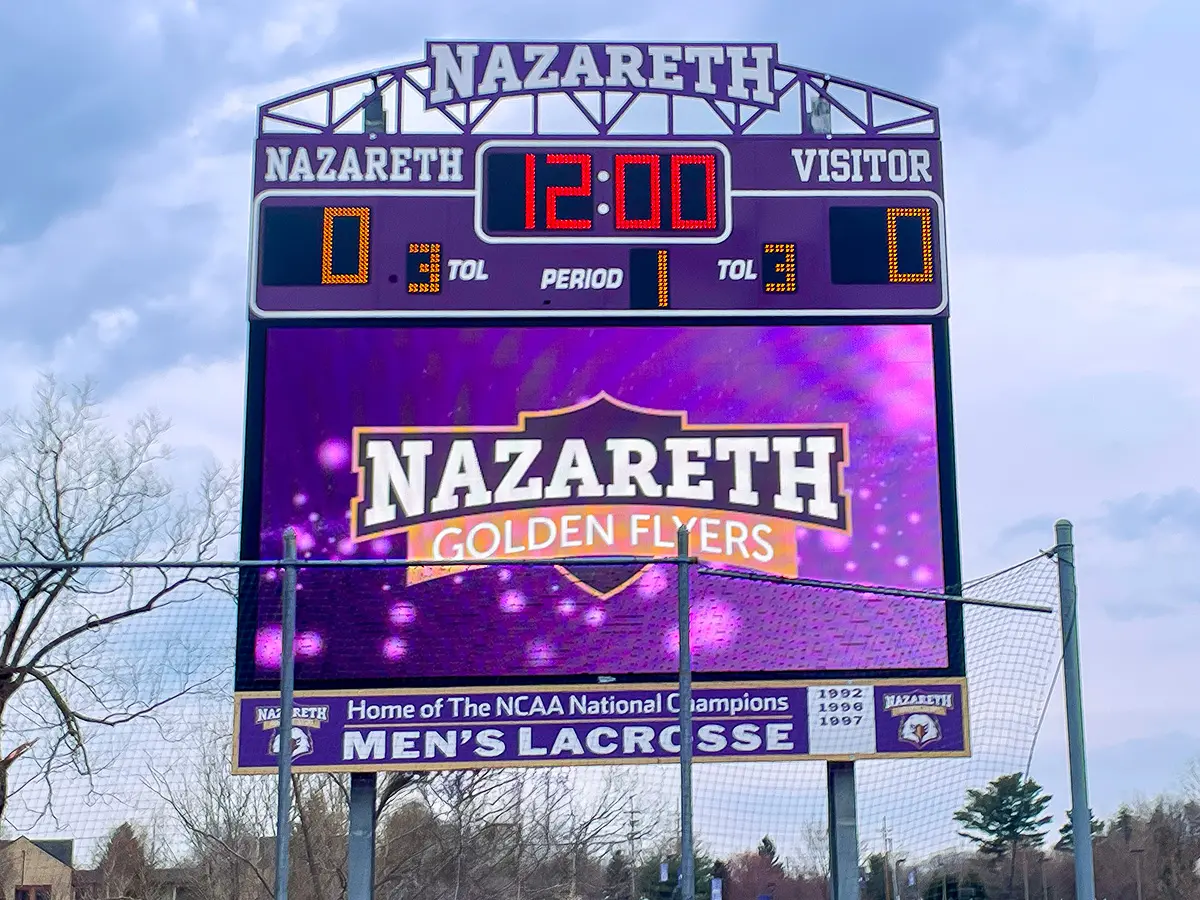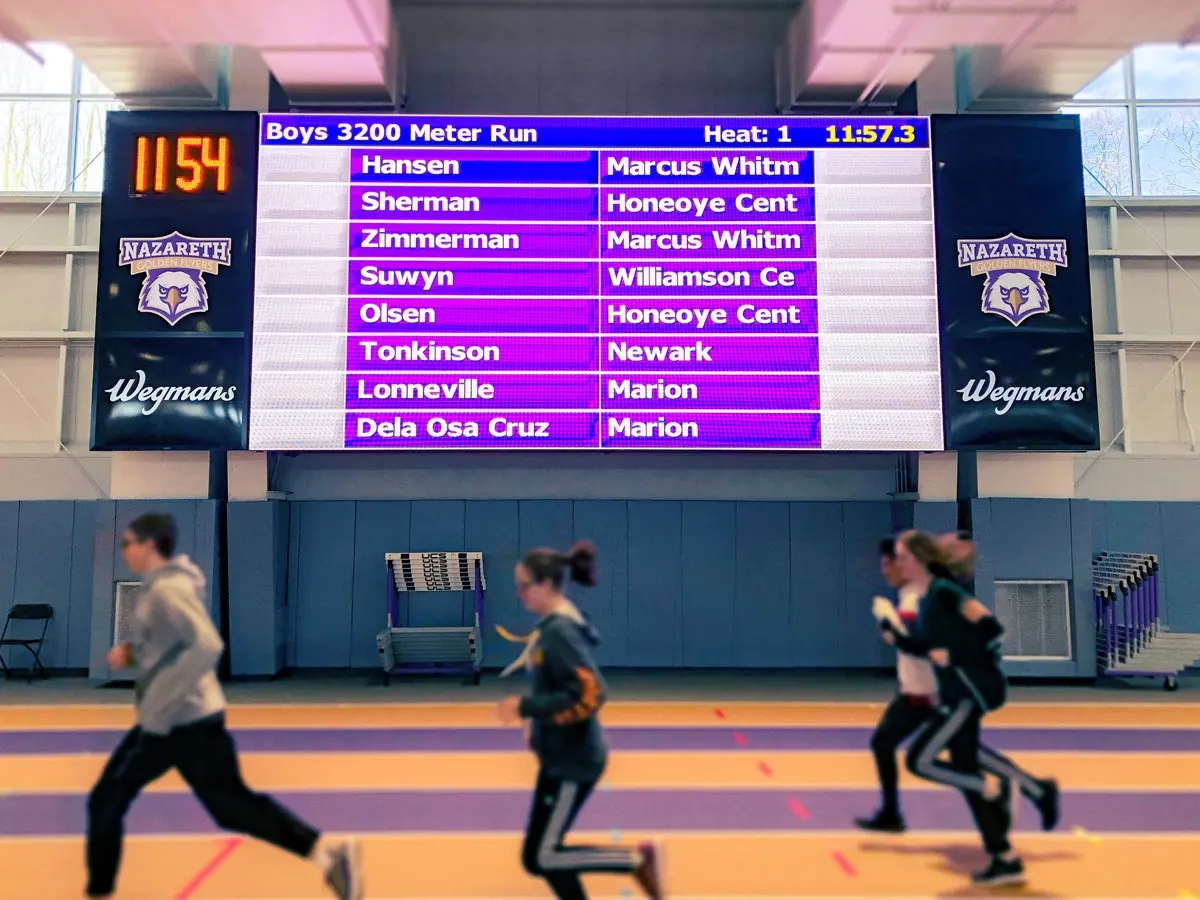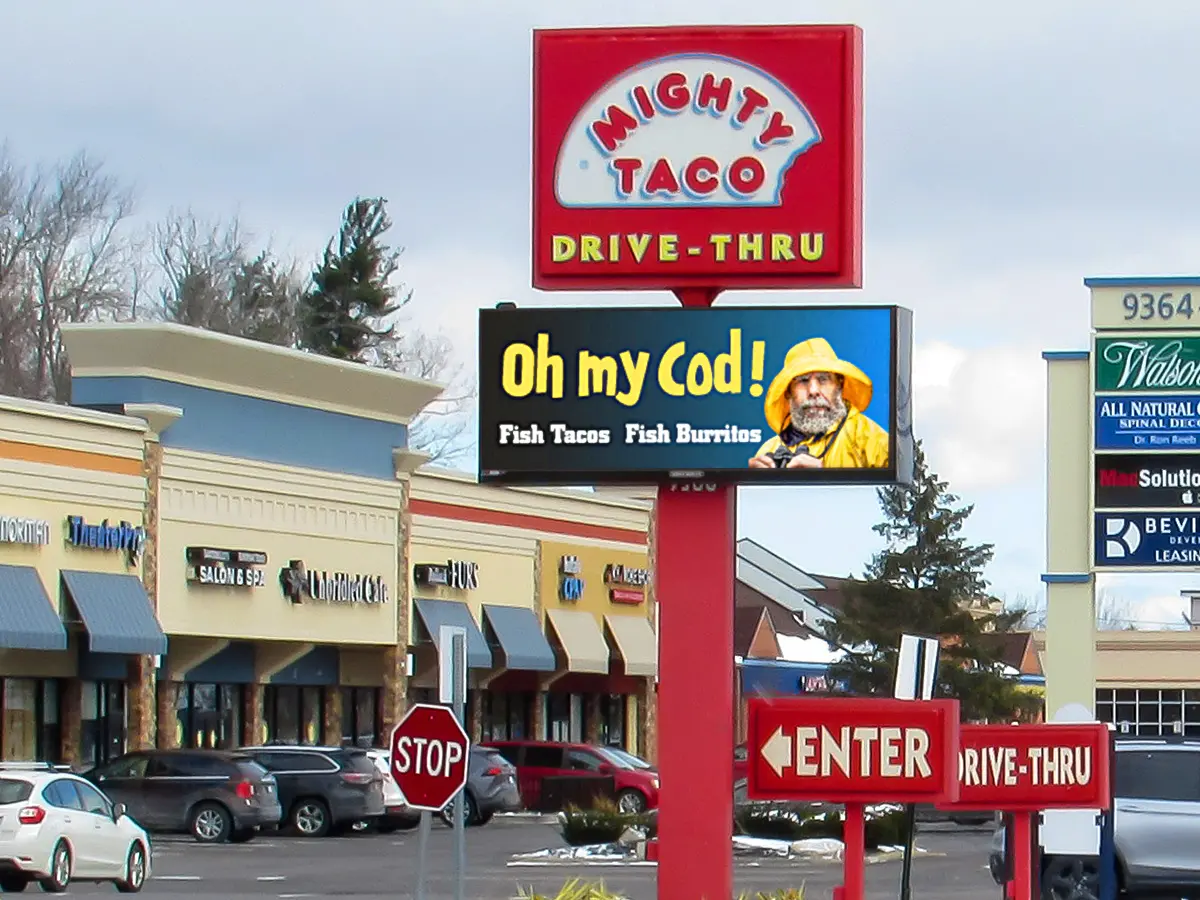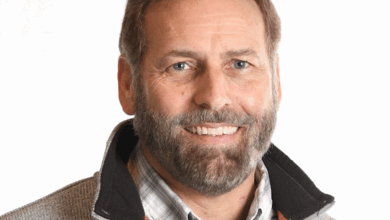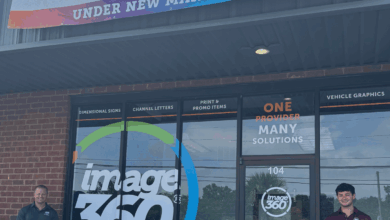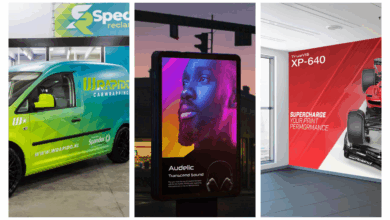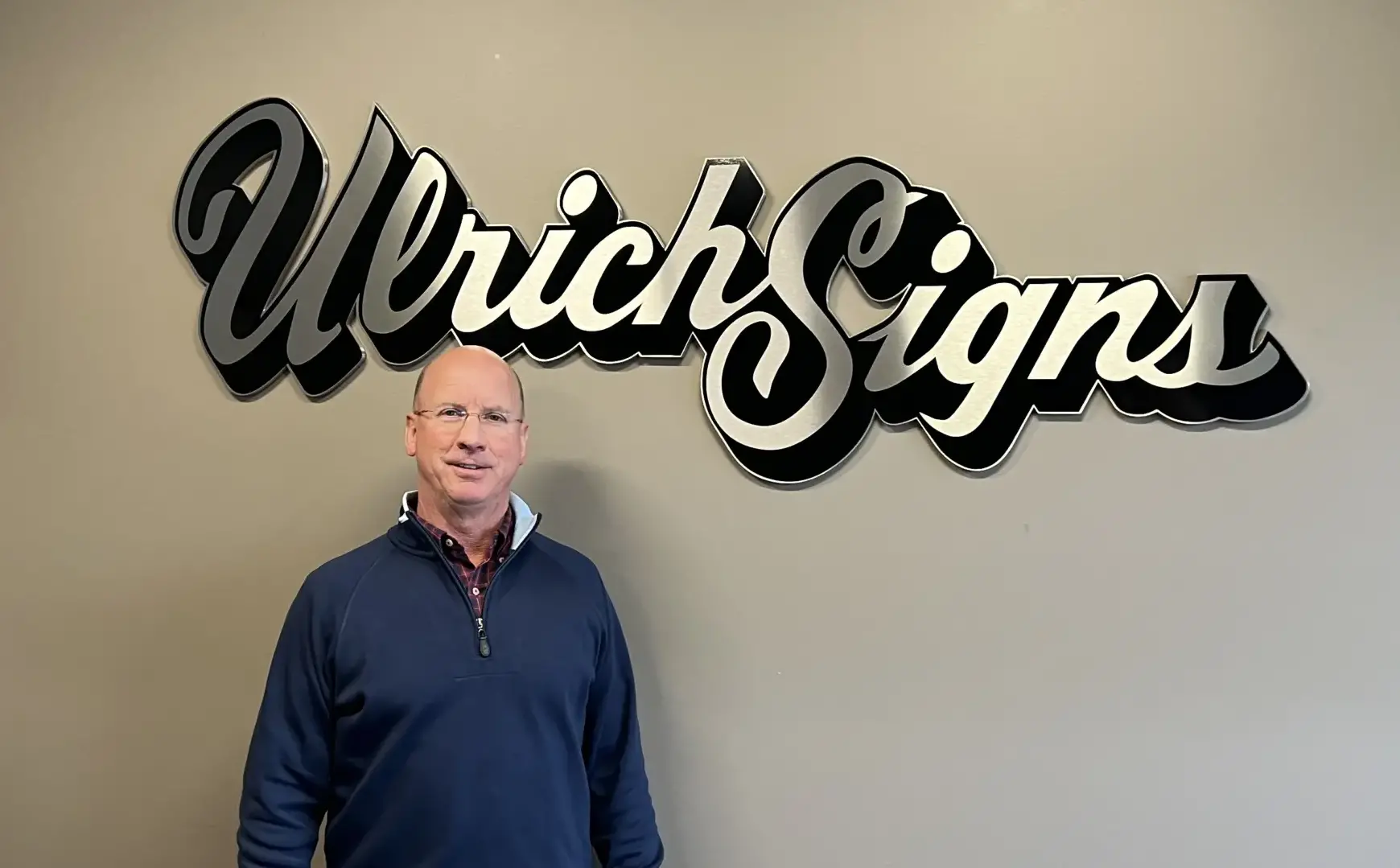
Ulruch SIgns, a New York-based sign company, a third-generation family-run business is celebrating its 85th anniversary this year.
Ulrich Signs is Watchfire Signs’s top dealer in the state designating it a well-respected company in western and central New York, and northwest Pennsylvania. Ulrich’s work can be seen in a variety of installations, including Nazareth University’s Golisano Training Center, Mighty Taco, Delta Sonic carwash locations, and Benderson Development shopping centers.
President Chris McCaffrey started working at Ulrich Signs in 1991 and has been at the helm since 2006. He’s overseen expansions in sales and customers, and the creation of a new 25,000-square-foot headquarters in 2017.
McCaffrey is excited about the future of Ulrich Signs and the signage industry as a whole. We spoke with him about Ulrich’s history, projects/leadership, and the signage industry:
The history and future of Ulrich Signs
Tell us about Ulrich — how was the company founded?
CM: Ulrich Signs was started in 1939 by Robert Ulrich. Robert was a sign painter for Harrison Radiator Corporation. He was also making signs for people he knew. Robert left his position with Harrison to start Ulrich Signs and pursue full-time work as a sign painter. He rented space and produced hand-lettered painted signs and vehicle lettering. In 1962, Robert’s son Michael joined the company. For many years, Ulrich Signs had three employees. I joined his father in-law in the business in 1991 becoming the third generation in the business. Ulrich Signs currently employs 23 people. We provide signage for developers, car dealerships, convenience stores, medical facilities, fast food restaurants, and car washes to name a few. This year the company celebrates its 85th anniversary.
What areas does Ulrich specialize in and what products/services does it offer?
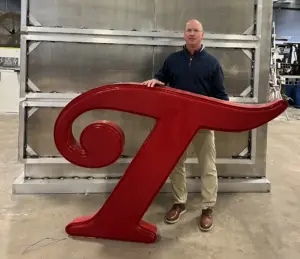
CM: Ulrich Signs specializes in all types of commercial signage. The majority of work is illuminated signage, pylon signs, LED electronic message centers, and channel letters. Ulrich Signs designs, manufactures, installs, and services all types of signage. Our business has grown significantly by offering electronic message center (EMC) signs. We work solely with Watchfire. We have installed hundreds of EMCs. Some of our recent projects include retrofitting 14 Mighty Taco locations. We removed failing units and installed new Watchfire 8mm full-color signs. All 14 signs are programmed from their corporate office.
We have also installed over 25 EMCs for the Delta Sonic car wash chain. They also went through an extensive conversion project that included removing faulty units and installing all-new Watchfire signs. Electronic message centers continue to improve and offer amazing sign opportunities for all types of businesses. Zoning laws have also evolved to allow message centers. This segment of the industry will continue to grow with indoor LED signs becoming more popular and sports venues utilizing LED EMC technology.
What are some of the key ways Ulrich has evolved over the years?
CM: Ulrich Signs has evolved over the years as the industry has changed. The industry has changed dramatically as new materials have been introduced to sign manufacturers. Ulrich Signs has expanded by investing in equipment such as vinyl plotters and cutters, full-color digital printing, computerized routing equipment, automated channel letter-making equipment, and most importantly boom trucks and bucket trucks for installation and service work. Ulrichs Signs now has 10 installation trucks ranging from 30’ to 85’.
What are Ulrich’s plans for the future?
CM: Ulrich Sign’s plans include adding additional personnel and equipment as needed. Also, our plans for the future are to continually grow our digital business. We foresee tremendous opportunities in the sports market with digital scoreboards replacing traditional static scoreboards. We have installed two Watchfire video boards at Nazareth University.
One interior scoreboard in the Golisano Training Center and one exterior scoreboard at their stadium field have been installed. The interior board is 12’ X 21’ X 6mm and the exterior video board is 9’6” X 18’ X 10mm. The scoreboards with video capabilities offer many options to high schools and universities. Often the signs are operated by students. This is a unique learning opportunity that can be tied into a graphics or media production course. We are excited about the future for this type of signage.
The company celebrates its 85th anniversary this year — what do you consider the Ulrich legacy? And how will it be carried on?
CM: The Ulrich legacy is providing high-quality signs and great service for a variety of customers. We are fortunate to work with many of the large brand-name companies of Western New York. We will continue to build on our legacy by meeting the needs of our customers through innovation and improved manufacturing and installation methods.
Projects & leadership
What is your favorite project/installation that Ulrich has done?
CM: My favorite project was installing seven-foot-high channel letters for the new Oishei Children’s Hospital in Buffalo, NY. The two sets of letters were installed 180’ up on the building. It was a high-profile job because the new Children’s Hospital was a major construction project for the region. My favorite project for 2023 was building 6’ high X 24” deep X 60’ long channel letters for West Herr Auto Group. West Herr owns 40 car dealerships in Western New York. The letters were fabricated of aluminum and installed on a custom base with a diamond plate platform. The letters are being transported from site to site and have provided great visibility for the car dealerships.
What is the most challenging project/installation that Ulrich has done?
CM: Our most challenging projects are high-rise installations. We have completed several projects more than 100’ in the air. The high-rise projects require extreme caution, precise engineering, and meticulous installations. Children’s Hospital, Buffalo General Hospital, Delaware North, and Aleron are examples. These jobs are also rewarding once the successful installation is completed.
The company created a new 25,000-square-foot headquarters in 2017 — what were the driving factors behind this expansion?
CM: In 2017 we moved into a renovated 25,000 square-foot facility. We had outgrown our 7,500 square-foot facility and were renting an additional 3,000 square feet of space. We worked with two contractors to complete the renovations of an existing warehouse in 9 months. The new facility includes 2,500 square feet of office space and 22,500 square feet of manufacturing area. The project was exciting as our company anticipated a great new workspace. Our employees were able to provide input on how the facility was laid out. The current space includes offices, a graphics area, welding stations, an electrical area, a channel letter production area, a paint booth, and storage. We do have additional land available if we decide to add to our facility in the future.
What are the biggest lessons in leadership you have learned during your time at Ulrich?
CM: The biggest lesson in leadership that I have learned over the years is to lead by example. Be honest, listen, hire talented people, and let them do their jobs. It is critical to listen to employees and be willing to implement changes that help improve our operation. Managing people requires communication, patience, flexibility, and direction.
The signage industry
How has the industry changed since you’ve been with the company?
CM: The sign industry has changed with technological improvements. Signs are designed with graphics programs instead of hand sketches. There is high-quality equipment available to improve production. Equipment has decreased the amount of hands-on craftsmanship that was required in the past. An example is a carved sign being done by an automatic router vs. hand-carved by an artist. The materials used in sign manufacturing have also improved. New materials include LED lighting to replace fluorescent bulbs and neon tubing.
What is your favorite part of working in this industry?
CM: My favorite part of the sign industry is the fast-paced work environment. We always have multiple projects in process and each one is slightly different and presents unique challenges.
I enjoy collaborating with customers to provide sign solutions to communicate their brand to consumers.
What challenges are you or the overall company currently facing specific to the signage industry?
CM: The biggest challenge in the industry is finding qualified, skilled tradespeople. The industry requires metal fabricators, welders, electricians, and sign installers. It is important that schools encourage students to learn a skilled trade that does not require a college degree.
The other major challenge to our industry is zoning laws. It is challenging to obtain sign permits in many municipalities. While some laws are less restrictive, the process of obtaining permits is time-consuming and often requires attending planning and zoning meetings. Sign companies are often tasked with obtaining permits and this is another critical service that we provide for our clients.
You mentioned schools as an opportunity for growth for the industry — what overarching trends do you expect to shape the industry in the next 5 years?
CM: I think the industry will continue to become more automated. This will require employees to be proficient in computer technology and robotics to operate equipment. However, the sign industry will still need craftspeople who can utilize tools to build and install signs.
